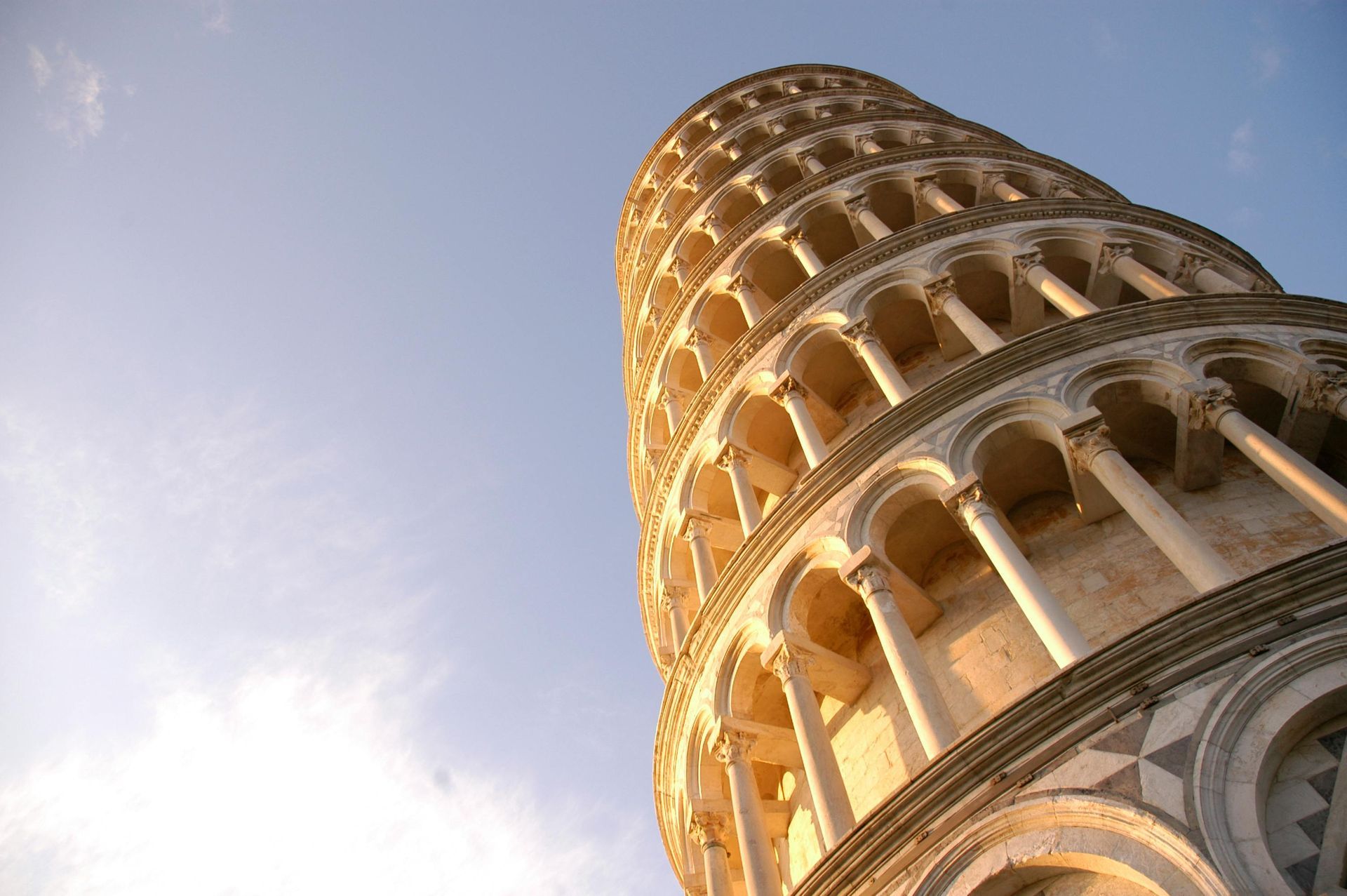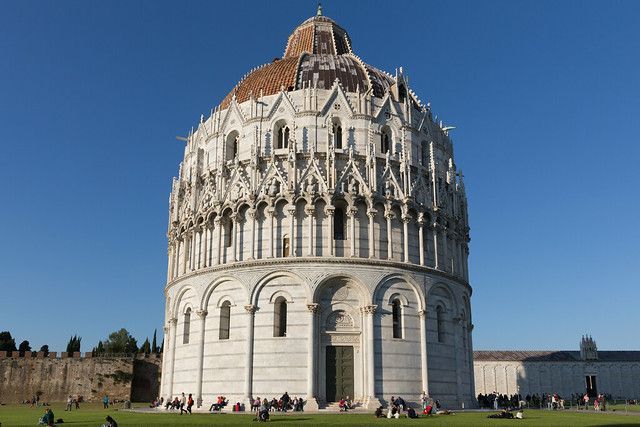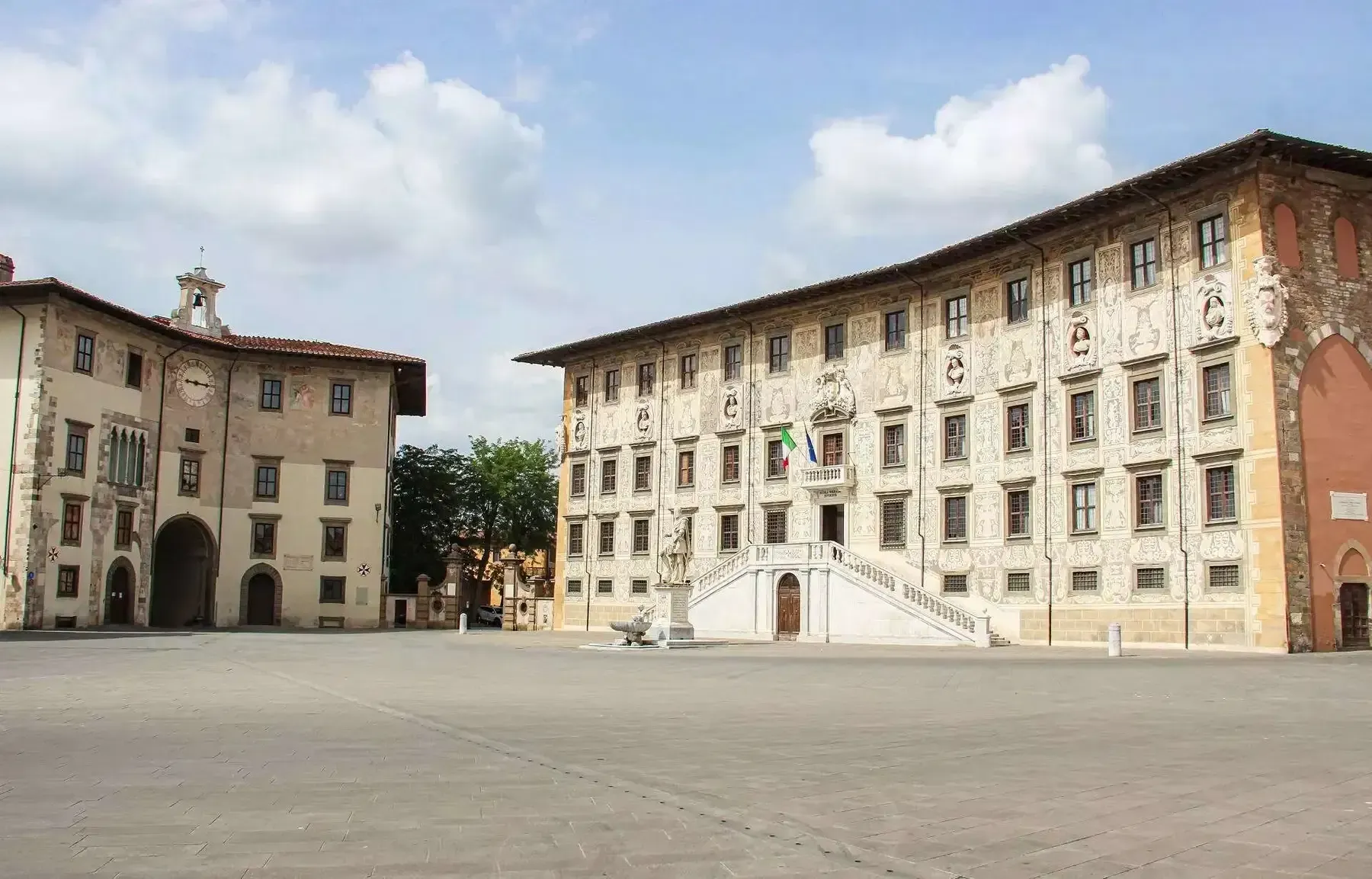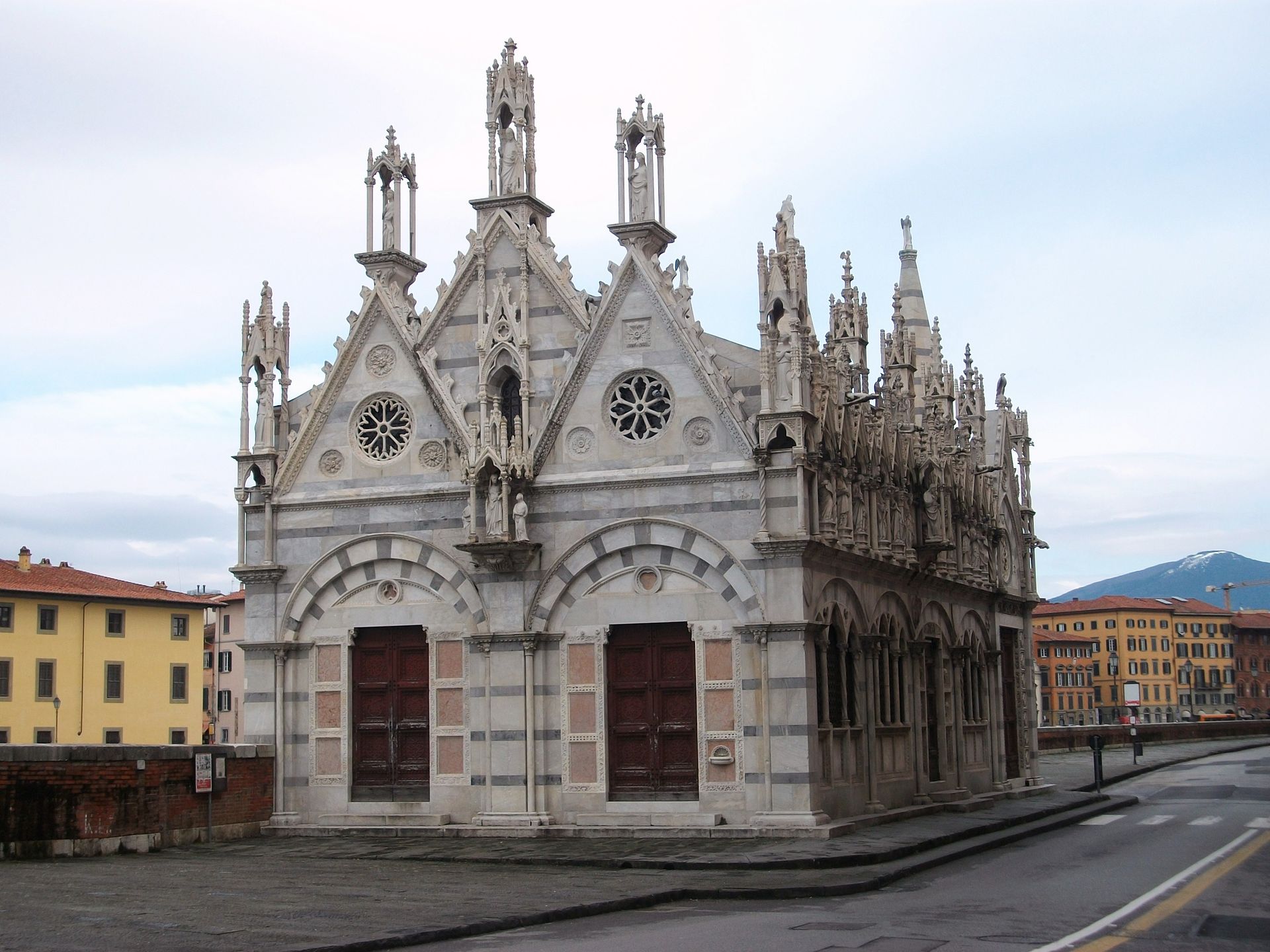PIAZZA DEI MIRACOLI THE CATHEDRAL
A Testament in Marble to Divine Majesty
The Square of Miracles stands upon the ancient sacred precinct of the Romans. The very first edifice erected here is the Cathedral, officially the Primatial Cathedral of Santa Maria Assunta. Construction began in 1063 AD under the direction of the master Busketo, appointed by the Council of Elders of the Republic and most likely hailing from the Holy Land. His influence is evident in the cathedral’s many allusions to Palestine’s three great sanctuaries: the Church of the Nativity, the Church of the Holy Sepulchre, and the Al-Aqsa Mosque (the “Rock Mosque”).
It was dedicated to the Assumption in honor of the victorious Battle of Palermo, fought from 13 to 18 August 1063. Measuring approximately 100 metres in length and 70 metres in width, it ranks as the third-largest church in 11th-century Europe, surpassed only by St. Peter’s and St. Paul’s Outside the Walls in Rome.
Its style—known as Pisan Romanesque—is unparalleled, with counterparts found throughout Tuscany, Sardinia, Corsica, and even in Campania and Puglia. The façade is Rainaldo’s masterpiece (though many of its friezes and capitals are attributed to Guglielmo and Biduino), composed of blind arches adorned with lozenges and intarsia, surmounted by four tiers of accessible loggias. Among its treasures are the bronze portals—designed by Raffaello Pagni to replace those lost in the 1595 fire—and Andrea Pisano’s Madonna and Child (circa 1343), perched atop the façade’s highest cusp.
Inside, the jewel of the nave is the Pulpit by Giovanni Pisano. Begun in 1301 and completed in 1310, it was carefully dismantled during the 1595 fire to save it, its fragments dispersed until reassembled—albeit with some alterations—in 1926. The lower tier features grand lion stilophori, caryatid and telamon columns, while prophets, sibyls, and apostles in dynamic poses frame the life of Christ, from the Annunciation to the Last Judgment. This pulpit is celebrated as the ultimate example of medieval expressionism.














